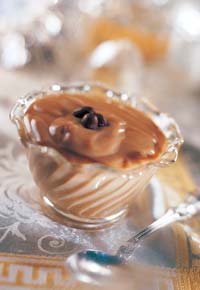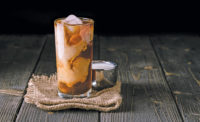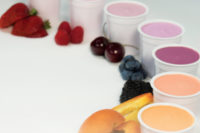
Within the dairy industry, coffee flavors have routinely been used in ice cream and iced cappuccino drinks. There has also been increased interest in coffee flavors for cultured products. Creative food scientists have been requesting coffee extracts for items ranging from coffee yogurt drinks with nutraceuticals, to coffee-flavored cream cheese. While fruit flavors tend to do well in mainstream yogurt lines, coffee and cappuccino flavors have been showing up in many line extensions. Newly introduced organic coffee extracts have also been doing well in existing organic cultured product lines. The natural aspect of using coffee as a flavoring component has appeal to health-conscious consumers.
Much like grapes are to wine, coffee is unique in that there are many variations in the flavor depending on origin of the coffee bean and the roasting process, as well as the extraction method. In fact, there are many comparisons in marketing coffee to marketing wine, especially at the high end of the market. There are many “estate coffees” in the marketplace that command much higher prices, similar to “estate vineyards.” While these comparisons have been successful in the home coffee consumption area, they have yet to find their way into the coffee extract market.
While there is no standard of identity for coffee, the following are some basic coffee extract terms, including sensory descriptors. All of these extracts provide dairy foods with both color and flavor.
-
Espresso extract imparts a very dark roasted flavor, close to a smoky note. It is a challenge to work with this flavor profile in yogurt since it has some harsh notes that may not be masked by the yogurt, but it works great in non-cultured products.
-
Cappuccino extract imparts rich, creamy coffee notes. They can have a hint of cinnamon and chocolate. They work great in cultured and non-cultured dairy products.
-
Coffee extract provides good coffee flavor from freshly roasted coffee beans. Coffee extracts have great appeal since there is no artificial aftertaste, which can sometimes be found in coffee flavors that use carriers.
- Organic coffee extract is newly available and comes from freshly roasted organic coffee beans.
While there are many choices available for coffee-flavored products, the most successful tend to have rich, fresh brewed notes, which remind the majority of the adult population of their freshly brewed cup in the morning.

